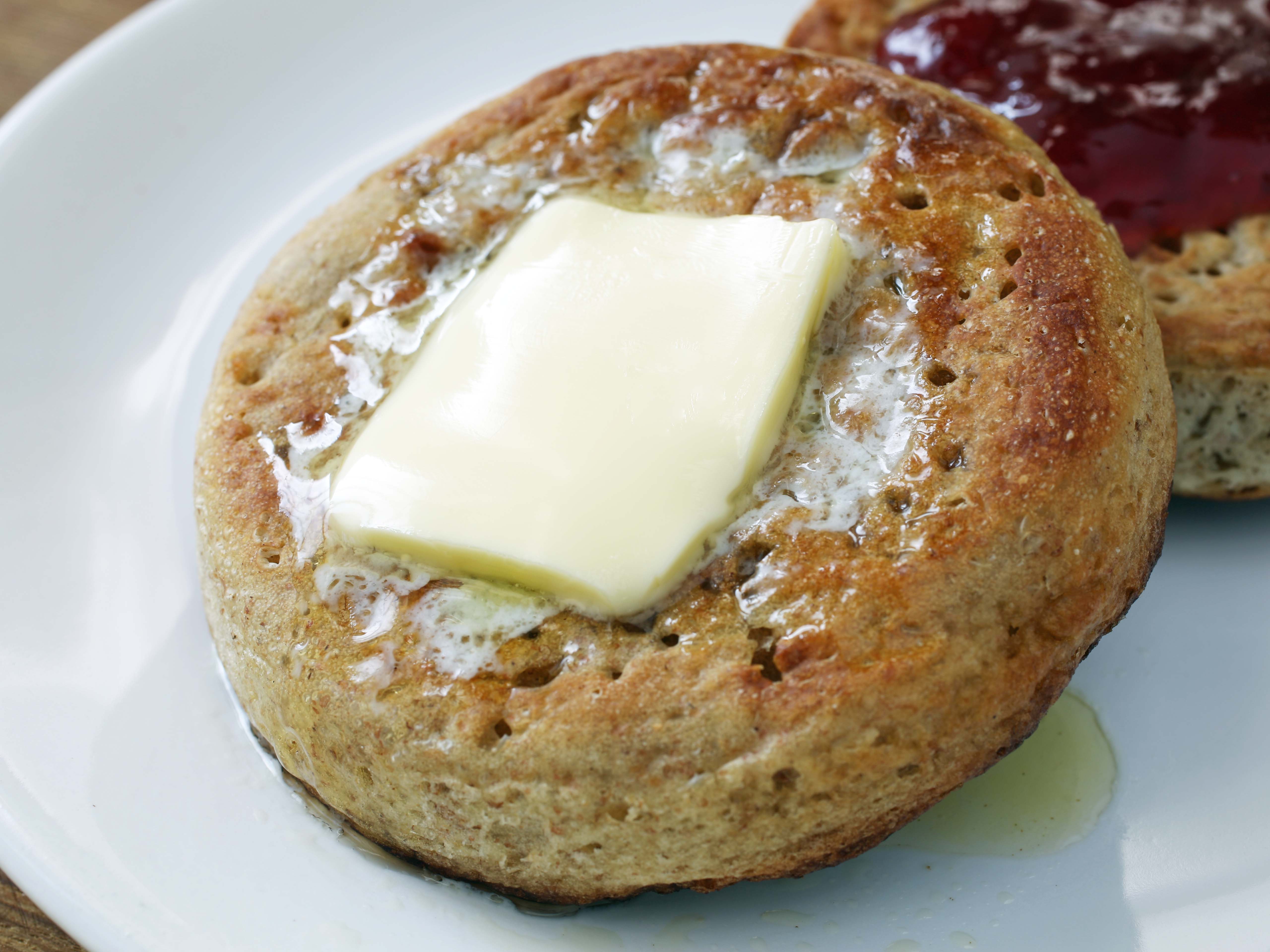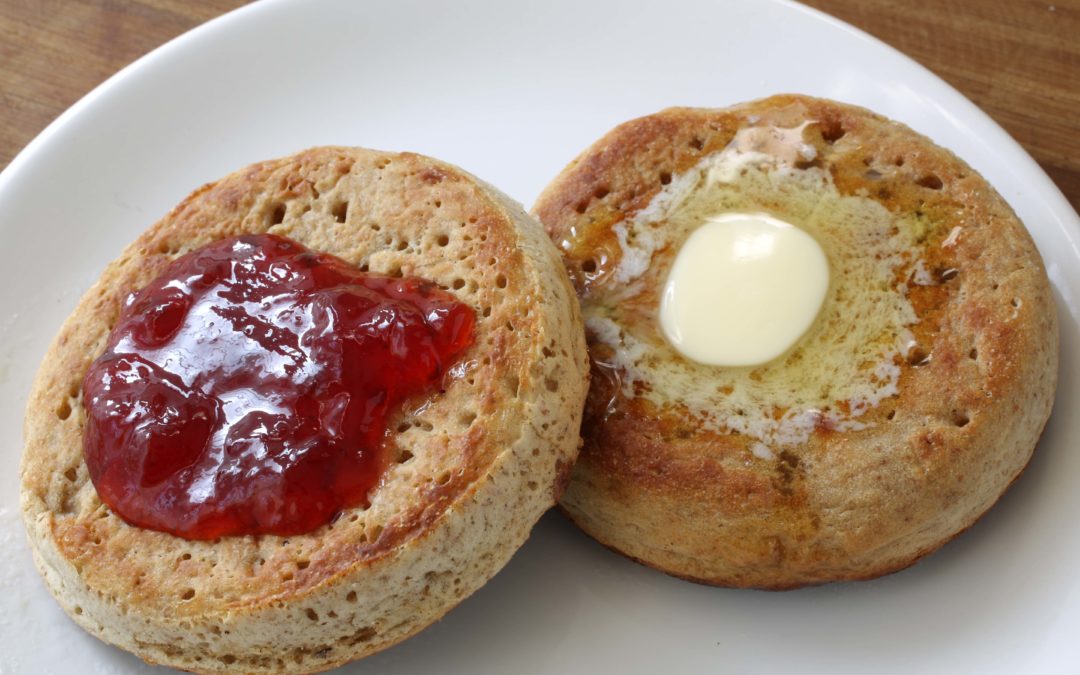How To Make Crumpets
Sometimes the question is how to make crumpets? And sometimes it is why make crumpets? The former is easy and we will get to that. The latter has but one answer – to deliver butter and jam to our mouth. It always seems to me that a major theme of breakfast is “Vehicles To Deliver Butter and Jam”. This theme covers toast and certainly english muffins. One can not underestimate the ability of biscuits and scones, either. They do a very good job of delivering butter and Jam. Sometimes though, we need to look beyond these regulars for something just a little different. The crumpet, a thick, light and chewy griddle cake with tiny holes does butter and jam delivery, too. And crumpets do it well!
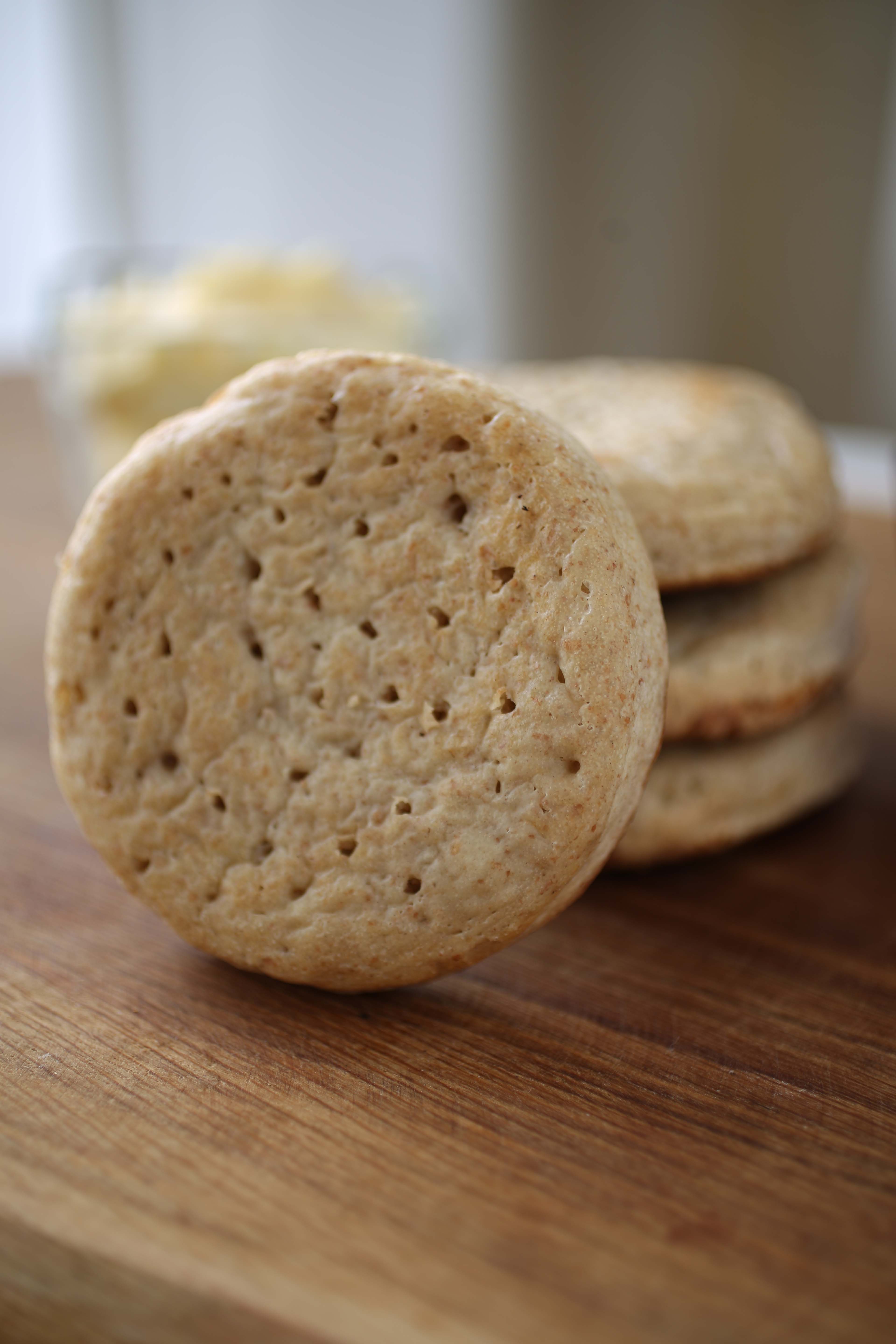
How To Make Crumpets – The Batter
The difference between toast, biscuits, scones, English muffins and crumpets is the crumpets start as a yeast raised batter and are cooked on a griddle. Making the batter is really quite easy. Even the most junior cook can mix wet and dry ingredients then let the mixture sit and get bubbly.
How To Make Crumpets – The Equipment
Perhaps the greatest challenge is making sure you have the equipment. Not only do you need a griddle with a flat side, but you need some kind of sign structure in which the crumpets are cooked, like a biscuit cutter. Since we likely want our crumpets to be the same size, we will need many rings the same size. Who has a bunch of biscuit cutters that are the same size? I have 2 sets of biscuit cutters, but they are all different sizes. One could buy a set of crumpet rings or cut both ends off a few tuna cans (should you have a few laying around). One could also go with out rings. Sure, the crumpets may spread and be thinner than the classic crumpet, but they will be just as tasty. To solve the spread issue, use a little less milk in the recipe. A thicker batter won’t spread!
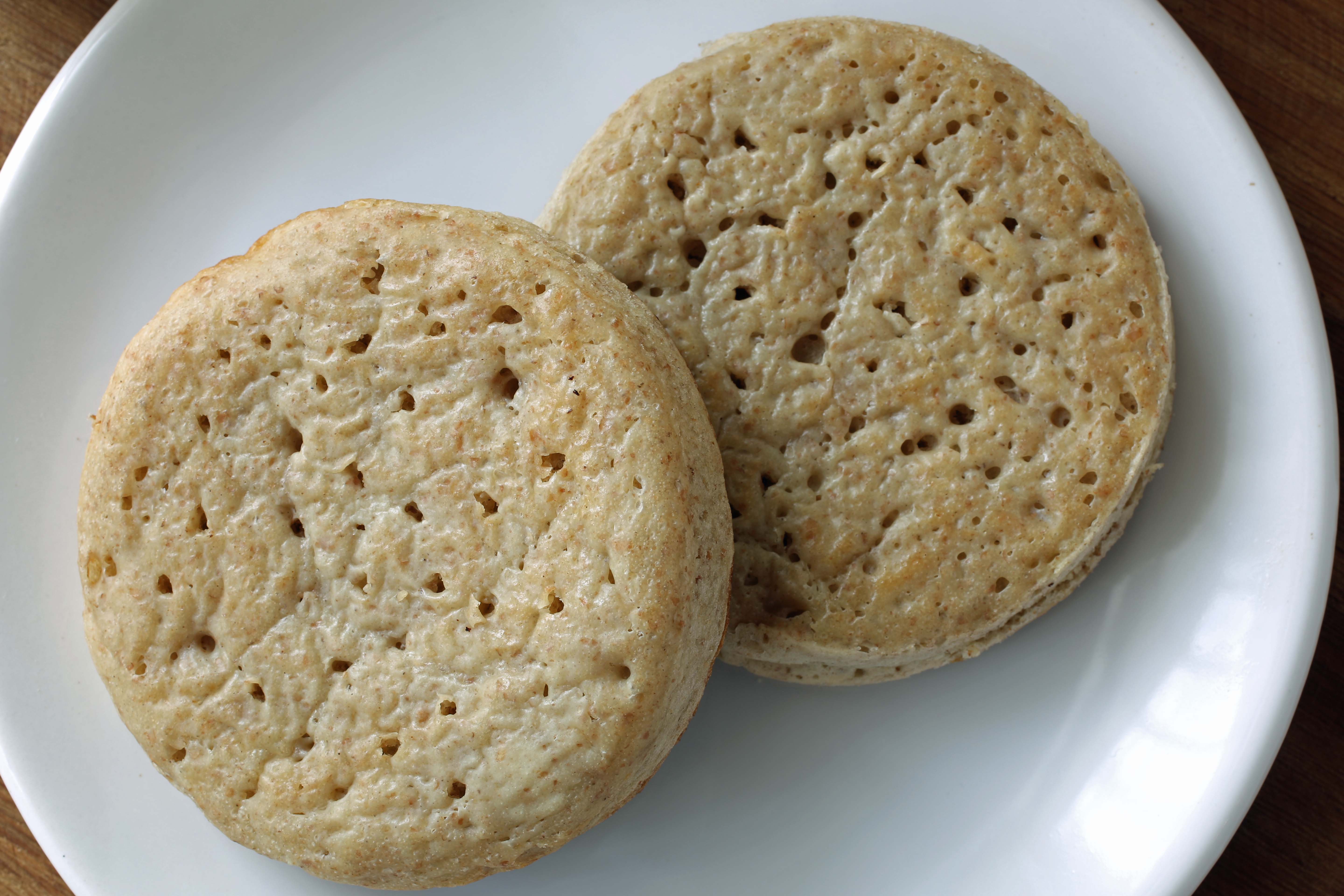
How To Make Crumpets – To Flip Or Not To Flip
After ladling the batter into the rings, crumpets are cooked until the tops bubble, the tops are dry and the crumpet is cooked through. The time it takes to cook a crumpet depends on how much batter and how hot the griddle is, but they should cook slow so the bottoms don’t burn – about 10 minutes.
The normal impulse would be to remove the crumpet from the ring, flip the crumpet and cook it on both sides. Classically, though, a crumpet is not flipped. To flip or not to flip, that is the question. I personally don’t flip. I toast later. It’s up to you.
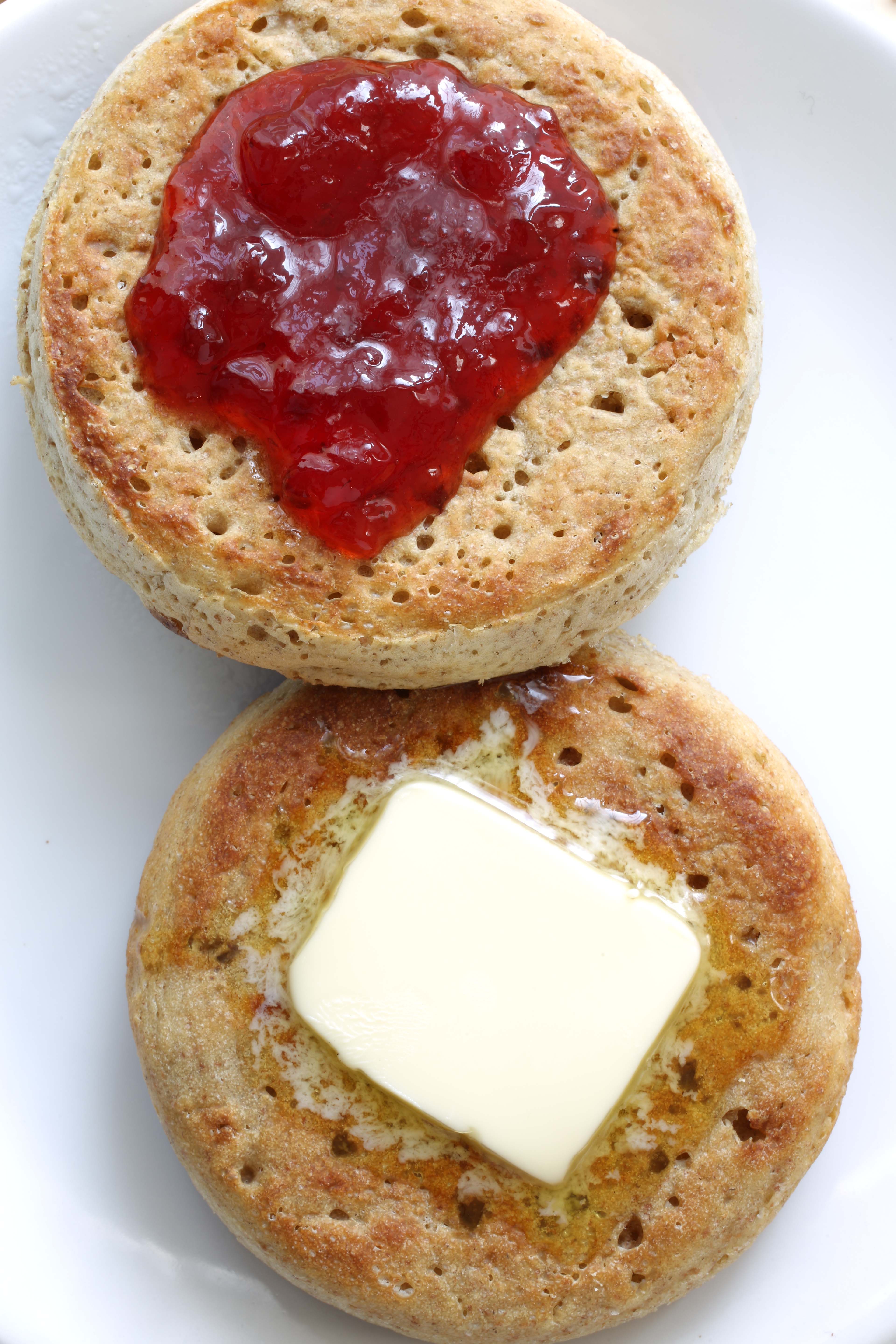
The video below shows all the steps involved in making crumpets. The full recipe follows.
- 3 cups of all purpose flour
- 1 cup of whole wheat flour
- 1 tbsp of yeast
- 2 tsp of sugar
- 1 teaspoon salt
- 4 cups of milk
- In a large bowl, mix the flour, yeast, sugar and salt.
- Use an instant read thermometer to measure the milk temperature, heat the milk gently in the microwave or on the stove top until it reaches 105F.
- Slowly drizzle half the warm milk into the flour mixture whisking constantly. When the first half of the milk is incorporated, whisk in the second half. Continue whisking until the batter is very smooth.
- Heat a griddle pan with a flat surface over medium heat. When the griddle is hot, place crumpet rings (biscuit cutters or clean tuna cans that have both bottom and top removed can also be used), on the griddle.
- Spray the rings with non-stick spray.
- Ladle in ½ cup of batter into each of the rings. Spread the batter flat if necessary. Let the crumpets cook until bubbles appear on the top, the top is dry and the crumpet is cooked through, about 10 minutes. Let the crumpets cook slowly so the bottom doesn't burt before the crumpet is cooked though. Repeat until all the batter is cooked.
- Remove the crumpets from the griddle.
- Serve warm with butter and jam.
- The rings can be omitted, but it will make for crumpets that are not as pretty. A thicker batter may be of interest if the rings are omitted. Reduce the milk used in the batter until a desired constancy is found, one that leads to a good crumpet without too much batter spread.
Keep Eating! Keep Innovating!
Have you ever had crumpets? Let us know in the comments or on Facebook.
The Culinary Exchange can also be found on Twitter, Instagram, Pinterest, Google+ and YouTube.
Come On! Follow Along!
